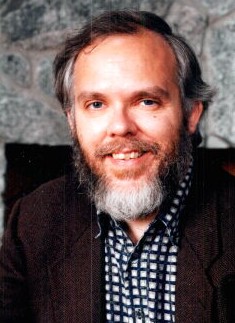-
(b.) - ?1952
Bio/Description
An American computer scientist, educated at the Massachusetts Institute of Technology, he is known for a number of significant contributions to computer networking; including the design and construction of the Internet protocols, distributed data storage, and PC software systems and applications. He is also the co-inventor of the end-to-end argument, often called the fundamental architectural principle of the Internet. He holds a B.S. in Electrical Engineering. He also holds M.S and Ph.D. degrees in Computer Science and Engineering from MIT. As a student at MIT, he was involved in developing commercial implementations of MACLISP and MACSYMA. Before joining the commercial world at Software Arts in 1983, he was an Assistant Professor of Computer Science and Engineering at the MIT Laboratory for Computer Science (now absorbed into CSAIL), where he helped to shape the early design of LANs and communication protocols. He participated in the design of the protocol suite now used in the Internet and also worked on systems architectures for confederated networks of interconnected personal computers. He also made major contributions to research on security and resource management in time-shared, multiprocessor computer systems as part of the Multics project. He was involved in the early development of TCP/IP, and was the designer of the User Datagram Protocol (UDP). He was also one of the authors of the original paper about the end-to-end principle, End-to-end arguments in system design, published in 1984. He is also known for Reed's law, his assertion that the utility of large networks, particularly social networks, can scale exponentially with the size of the network. It was first cited in "The Law of the Pack," Harvard Business Review (February 2001) pp 23?4. Along with Metcalfe's Law, Reed's Law has significant implications for large-scale network business models. In 2002 he was appointed an Adjunct Professor at the MIT Media Lab in the Viral Communications group and in 2001, he was one of six principal architects of the Croquet project (along with Alan Kay, Julian Lombardi, Andreas Raab, David A. Smith, and Mark McCahill). Croquet is a software development kit (SDK) for use in developing collaborative virtual world applications. The first working Croquet code was developed in January 2002. From 2003-2006 the technology was developed under the leadership of its six principal architects. On April 18, 2006 the project released a beta version of the Croquet SDK 1.0 in the open source. Since then, the Croquet technology infrastructure has been successfully used by private industry to build and to deploy commercial-grade closed source collaborative applications. As a teacher, he helped develop undergraduate and graduate courses in computer and communication systems design, and programming language implementation and design. From 2003-2009, he was also a part-time HP Fellow at HP Laboratories. Recently, he joined SAP Labs, where he is Senior Vice President in the Chief Scientist Group. In addition to his research roles, he has been active in the commercial world. For the last few years, he has acted as a strategic advisor to small and large technology based businesses, and consultant on advanced computing and communications technology. His primary consulting activities have focused on businesses that want to capture or create value resulting from disruptive dispersion of network and computing technology into the spaces in which people and companies collaborate and partner. He also spent four years at Interval Research Corporation, exploring portable and consumer media technology. For seven years prior to joining Interval, he was Vice President and Chief Scientist for Lotus Development Corporation, where he led the design and implementation of key products, including 1-2-3, and guided its technology strategy. Prior to joining Lotus, he was Vice President of Research and Development and Chief Scientist at Software Arts, the creator of VisiCalc - the first electronic spreadsheet. He has played a key role on the Advisory Board of the TTI/Vanguard research and advisory program, which was begun in 1991 by CSC Index, and is now a part of the Technology Transfer Institute. He is also a Fellow in the Diamond (formerly Diamond Technology Partners) DiamondExchange program. His current areas of personal research are focused on densely scalable, mobile, and robust RF network architectures and highly decentralized systems architectures. He also continues to build and prototype home LANs and portable computer technology in his home laboratory.
-
Date of Birth:
1952 -
Gender:
Male -
Noted For:
Designer of the User Datagram Protocol (UDP) -
Category of Achievement:
-
More Info:


